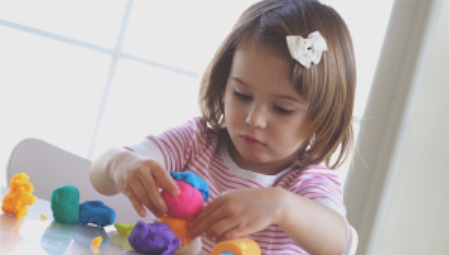If there are children in the house, or you yourself are fond of creative processes in the form of modeling from plasticine, it is quite possible that you had to deal with such a problem as the removal of contaminants from this material. The difficulty of removing plasticine, of course, is not commensurate with the attempt to remove the red wine stain from the white sofa, but it will have to be tinkered with, especially given the area and localization of the “plasticine” violation of cleanliness and order.

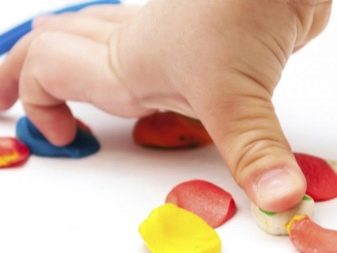
How to remove from a hard surface?
Of course, the best option when you have a little blood and all you need to do is just wash the clay from wood, glass or plastic. For example, if he was smeared with a table, toys or special children's boards for modeling. This process does not take much time and effort. So, to erase plasticine from toys or boards, it will be enough draw hot water into a wide container and place contaminated objects there for several minutes. The material will quickly melt, and you can easily scrape off its remains with a plastic knife or an alternative that can be found at hand, for example, with an old discount plastic card. After that, just wipe the item with a clean cloth dipped in soapy water or a mixture of ammonia and hydrogen peroxide (in a 1 to 1 ratio).
With the table, the actions are practically repeated. Prepare a warm soapy solution, wet the area of contamination and carefully remove it with a sponge and a scraper. Do not scratch a wooden or glass surface. If the clay doesn’t wipe off the table immediately, try to heat the defect with a hairdryer, so it becomes obedient, and you can again apply a sponge with soapy water.
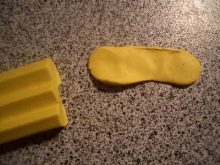

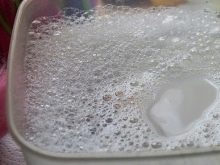
Removal from textiles
Still, it is not difficult to remove wax and other plasticine components from plastic and wood, but what if the clothes turned out to be spoiled? First, remove the top layer with a plastic knife or any other similar object. Then you can apply two contrasting, but effective methods: cooling or heating. The first will reduce the sticky properties of plasticine, and it will better separate from the fibers of the fabric. Options for freezing things:
- packed in polyethylene, put in the freezer;
- apply ice cubes to the stain;
- apply a special cooling spray.
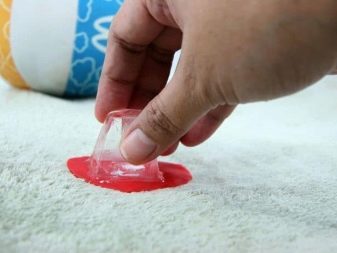

After this procedure, the plasticine stain will harden, and it can be cleaned with a plastic knife or a stiff brush.
When you don’t want to freeze your hands, turn on the iron. If, with the use of ice, the components of plasticine were solidified, the heater will melt them. The method will help to cope with the problem on dense fabrics, for example, jeans or trousers. To do this, you need to take several paper napkins and place one under a soiled place, and the second above the fabric.
Not including the steam effect, it is necessary to iron the napkin a couple of times, as a result of which the clay will remain on it.
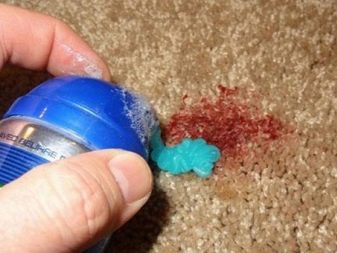
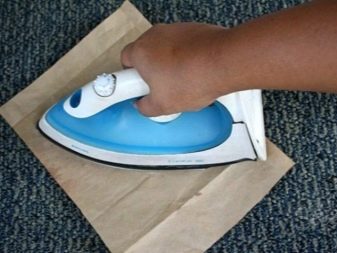
Oily stain removal
Unfortunately, having removed a significant part of the sticky material, a stain in the form of particles of dye and fat that have stuck into the fabric will still remain. For its subsequent removal, it is possible to use laundry soap, ammonia, vegetable oil or dishwashing detergent.
A third of the usual bar of soap is recommended to rub on a grater. Then pour this soap shaving with water until a thick foam forms, where you should put the spoiled thing, and rub the stain with soap. Half an hour later, the problem area must be brushed and washed, as usual. The method is valid for materials of all types, but with delicate things you should be careful - It is better not to commit too much brushing.
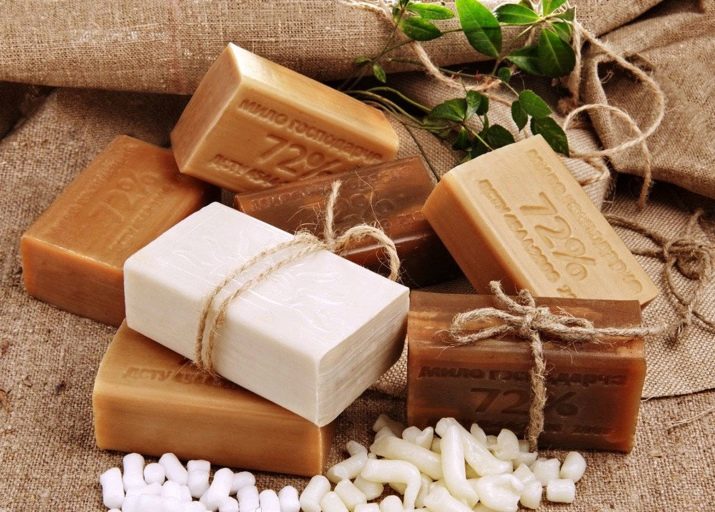
If on a shelf ammonia - you can safely use it. To do this, dissolve 10 drops of the substance in 200 ml of water. A small stain should be treated with such a solution using a cotton pad, and then wash the clothes completely. A heavily soiled thing can be soaked for half an hour. The composition of the solution is the same, just increase the volumes according to the outgoing proportions.
And finally, one of the simplest and most effective methods of removing oily stains from plasticine on clothes. The good thing is that a dishwashing detergent with vegetable oil is almost always available at home. It is enough to wet a cotton pad with oil and rub it over the problem area for several minutes.
It will dissolve the fats, then treat the trace with the product and leave the thing for an hour. Subsequent washing will completely remove contamination.
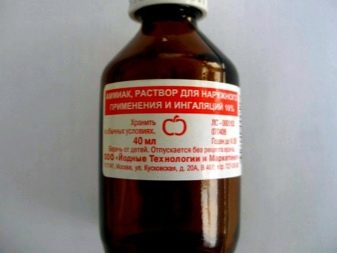
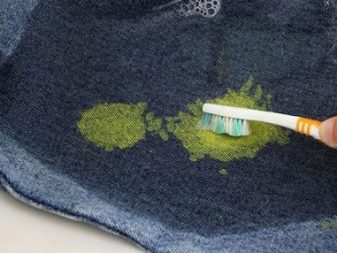
How to clean wallpaper?
However, you can not only stain objects and clothes - children know a lot about this. If the plasticine is on the wallpaper, and you do not see it as a conceptual decoration of the wall, arm yourself with several objects to get rid of the stain as soon as possible. In the event that smooth canvases are damaged, be sure to prepare the following:
- scraper;
- hair dryer;
- dry cloth;
- sponge and detergent.

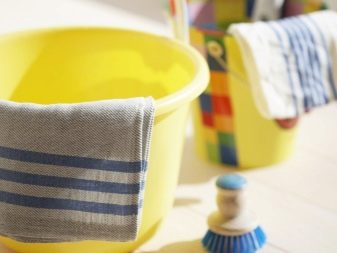
First, try to get rid of the top layer of plasticine with a scraper with gentle movements. Do not smear, just scrape it off. After removing the top of the dirt, plug in a hairdryer. Use it to warm the stain, and then pat it dry with a napkin. You can repeat these steps several times in a row. In the case of wallpaper, a greasy stain may also remain after contamination with plasticine, so it is necessary to use a sponge, after wetting it in soapy water. Do not water the stain, as well as saturate the sponge thickly. It is enough to moisten, squeeze and rub the stained place.
After that, it remains to dry the treated area with a hairdryer.

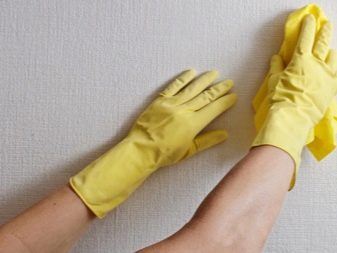
Cleaning different textures
Embossed wallpaper spoiled by plasticine will require additional plasticine, no matter how strange it sounds. Nothing scary, it just has to be white and used like an absorbent. To do this, you need to attach white plasticine over the adhering one and try to sharply tear it from the wallpaper. Strongly knead it should not, the material should not melt. The procedure is best repeated several times.
Then do the same actions as in the case of smooth ones. We heat the problem area with a hairdryer, then we try to get rid of the remnants of pollution with a napkin.
A trace in the form of a greasy stain will help to wipe off a sponge soaked in a pre-prepared soap solution.
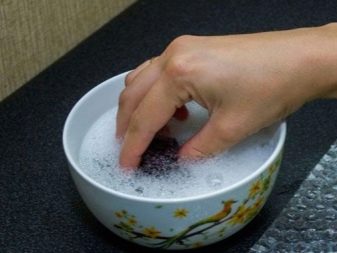
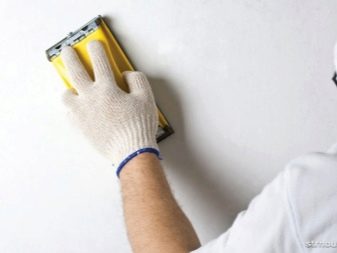
Additional life hacks: if the hair dryer is not at hand, try to carefully melt the clay with a heated iron or a normal wet towel. And be sure to keep in mind that the dry paper towel used to remove plasticine should ideally be white, without patterns and easily soiled marks. Otherwise, you can manage to aggravate an already contaminated place.
Blue, red, green or any other color - ordinary plasticine will still be sticky. Do not worry if it stuck to where it is not required. To do this, there are simple methods that will help solve the problem, even at home.
You will learn more about how to wipe plasticine from the next video.
